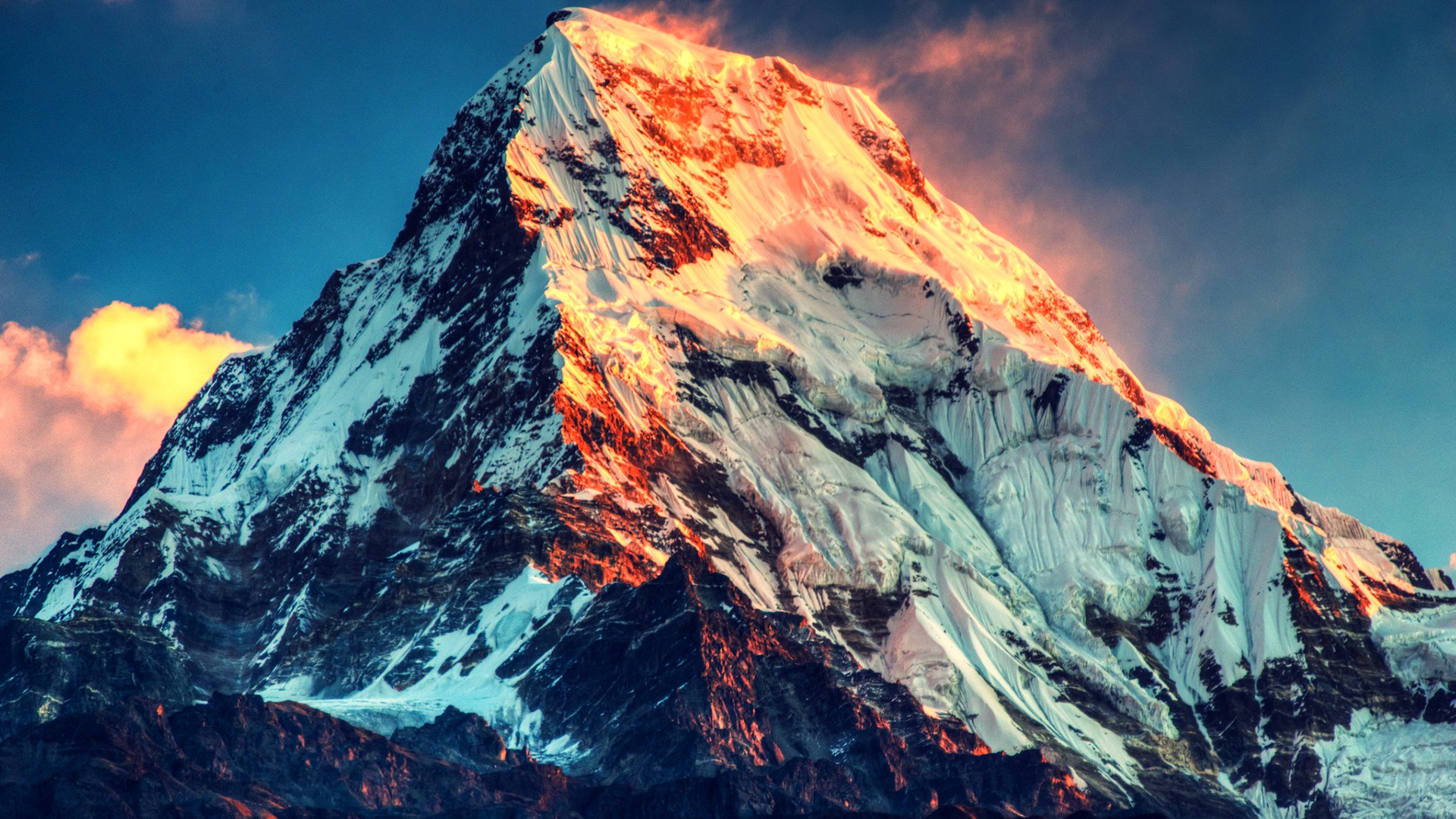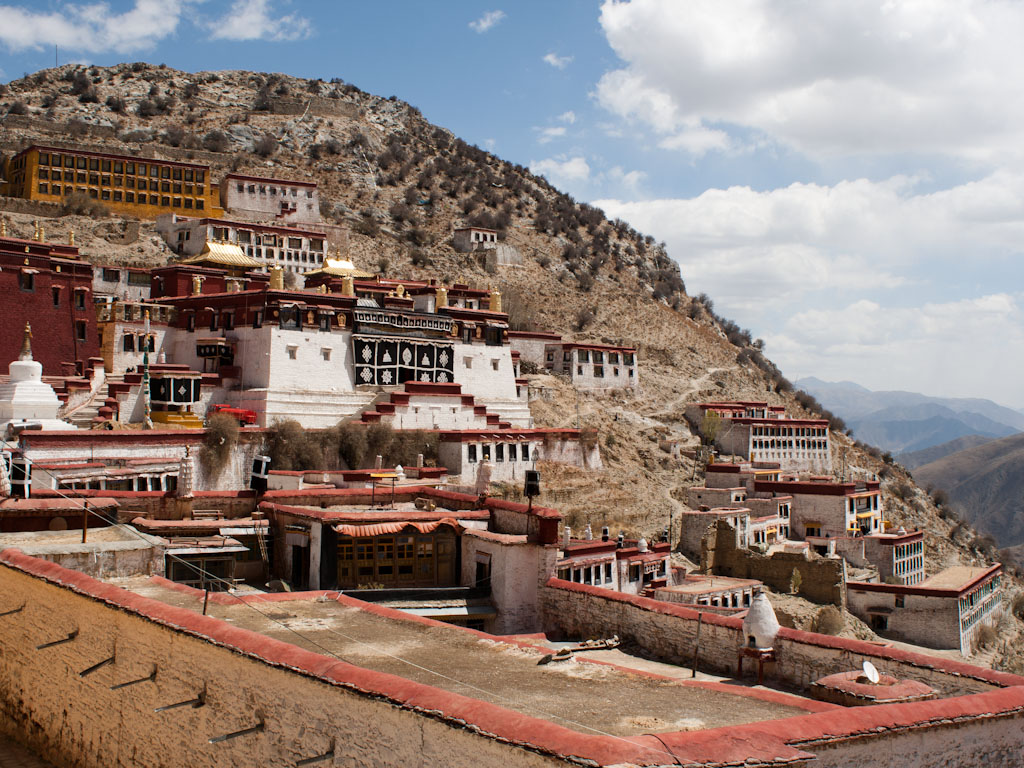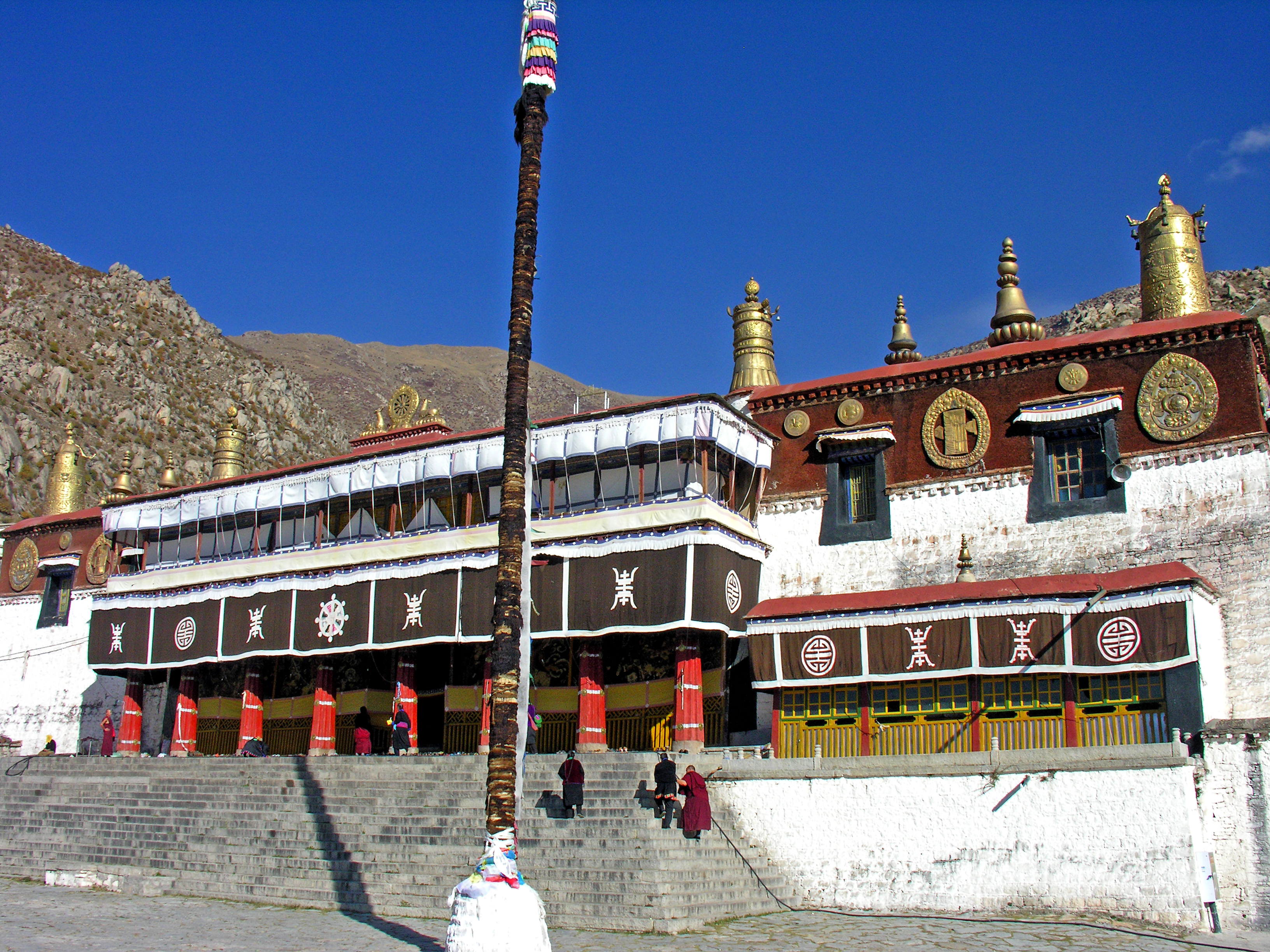Sakya Monastery is the center of the Sakya Sect. In Tibetan, the word Sagya means “gray soil” referring to the weathered gray earth on the Bonbori Hill where the monastery is located. This name later referred to the place to the Sakya Sect of Tibetan Buddhism. The monastery is 148 km away from Shigatse.
The monastery is divided into 2 by the Zhongqu River. The Northern Monastery sits along the Bonbori Hill, while the Southern Monastery lies in the valley. The Northern Monastery was founded in 1073 by Kun Gongjor Gyibo, founder of the Sakya Sect, and the Southern Monastery was built in 1288 by Drogon Chogyal Pagba, 5th Sakya Throne Holder.
Sakya Monastery is often referred to as the second Dunhuang as it boasts of many classical books whose exact number no one can tell. At the rear and both flanks of the Sutra Hall, giant wooden shelves reach up to the ceiling. Most of the classics date back to the Yuan and Ming dynasties. The hand-written classics were carefully written with golden, silver and crimson powder. They are bound in scrolls, folders or between boards. One of the scriptures bound in boards weighs a good 500 kilogrammes, making it the world’s hugest scripture. Besides religious content, the classics describe the history, medicine, philosophy, calendric system, geology, opera, poetry, folklore and grammar concerning Tibet.
The Sakya Monastery holds the world’s largest treasure of Buddhist scriptures written on Pattra leaves. There are 20 volumes of such scriptures written in Tibetan, Mongolian and Sanskrit. With iron pens, ancient scholars carefully wrote scriptures on pattra leave about 5 cm wide, some 20-60 cm long. As the Sakya Monastery is located in a cold and high place, the dry climate protects the treasures from rotting. Thus the treasures can be preserved until day.





